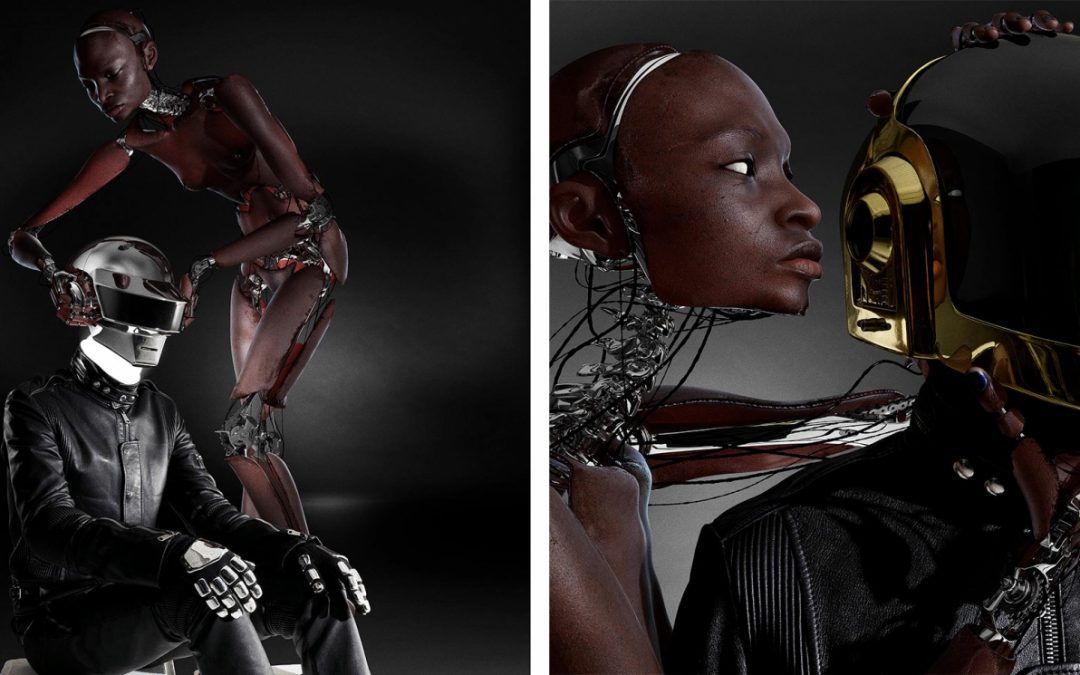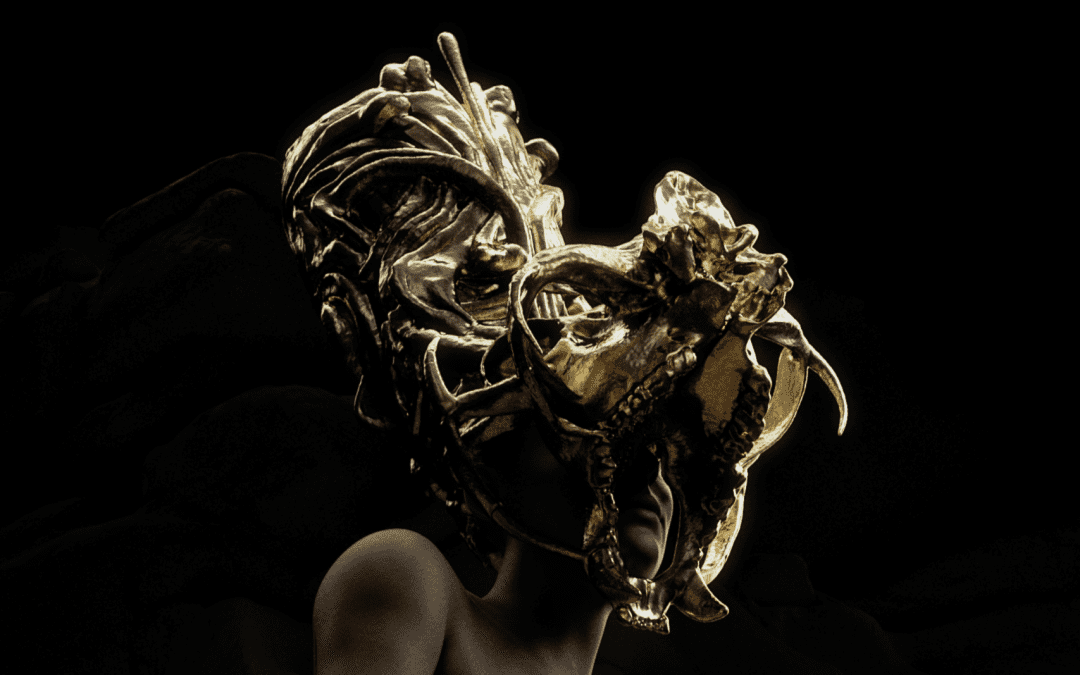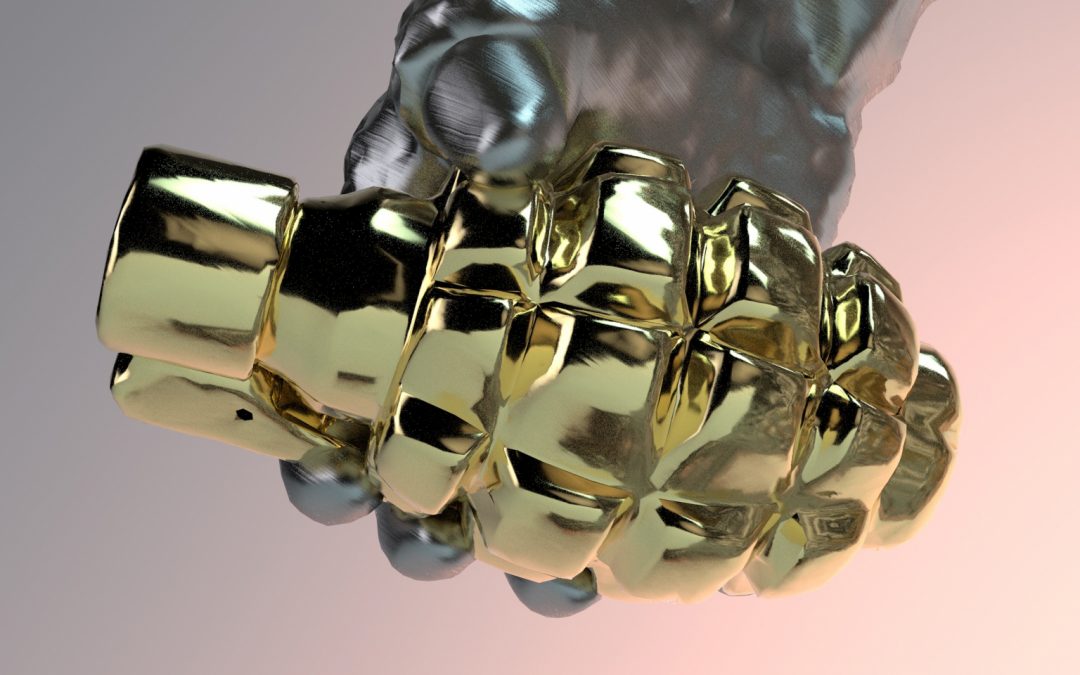The artist talks digital expression, pushing the surreal, and her collaboration with NARS Cosmetics.

Dimitri Daniloff on his collaboration with Daft Punk
By Arseny Vesnin (Twitter: @designercollector), founder of Designcollector Network.
Editorial is open for submissions: [email protected].
Artist Dimitri Daniloff’s has collaborated with Daft Punk for The Keeper, his first futuristic collection on SuperRare. He sat down with Arseny Vesnin to discuss his process and work.
Artist statement:
Imagery fascinates me because it questions our take on ourselves, and on our body especially. The growth of social media has created new ways to present oneself to others. The quest of a perfect being, the modern Prometheus has given way to a spreading of technical devices (filters, Photoshop…) democratizing the access to aesthetic surgery.

What was your path to doing what you’re doing now?
I started to study Mathematics and Sciences at the university but quickly realized that what I wanted to do was photography or images. I first experimented with 4×5 view cameras and then turned to the practice of digital photography in the early 2000 as I could see the possibilities that technique has to offer. In 2005 I was doing a first series “Cubisme” using digital photography mixed with 3D. And then 2008 “The keeper” with Daft Punk and the augmented woman (a fully cgi girl). The technique is not the goal but a fantastic tool to create. My artistic explorations have brought me to combine aesthetics, work on textures, deform the ordinary in order to invent a new social habitat. My work is breaking the rules of representation, physically propelling human beings into the virtual world. My encounter with photogrammetry a few years ago – a process consisting in taking measurements in a space and building, through a software, a 3D model from several viewpoints – has widened my possibilities. By creating a social canvas where bodies are voluntarily transformed, I play with our perceptions, and reach an augmented reality. New spaces appear at the borders of reality, and the viewer becomes its protagonist.
When you were growing up, was creativity part of your life, and how did you decide to focus on photography?
Yes, creativity has always been around me, my mother is fashion designer and my father was painter/sculptor. My whole childhood has been surrounded by artists.
I can remember a day I was probably around 11 and I did my first collage, a “robot” standing over the ocean with a yellow cab floating on the water. The “robot” was actually from my parent record’s Queen “News of the world” album cover that I cut out. That image must have been my first montage and was probably when I unconsciously decided to make images. My parents have seen the collage but never asked me what happened to their record.

Did you feel different at the time you realized yourself as an artist?
I don’t feel there is a moment I became an artist, but mostly that I was born an artist. Probably because
of my surroundings as a kid. I was lucky to be successful but I would have kept as an artist even without that success. I just don’t know how it is not to be an artist. For me being an artist is attached to a strong feeling of freedom.
Did you have an “Aha!” moment when you knew that direction and animation was what you wanted to do?
I can remember one of my very first tests (this is how you call your personal production in photo ) back in 96 being in the studio with models, makeup artist, hair stylist, set designer, assistants. The whole team was there to work on my vision. It felt so exciting. I really like to work with a team.

You directed a photography set for Daft Punk back 2008. Was it a second breaking point in your career after Sony Playstation projects? How does it influence your way of doing work now?
Yes after winning many awards with Playstation, Daft Punk was effectively a breaking point for 2 reasons. Artistically it opened me doors to the music industry and I was able to shoot with bands like Black Eyed Peas. Technically because I was including a human cgi model in my images for the first time, it wasn’t very common at that time, and that was a new step for creating images.

Do you collaborate with other artists?
Collaboration is an important side of my work, as it is a great way to learn and share experience.
It is also a way to be complementary to my work as I like to explore the edges of photography or even other fields that I don’t know about but still very curious. I am right now collaborating with a
VR artist to make my first VR experience on a grant we won last year. The project will be presented at “Les Ailleurs” a VR festival in Paris.
As a creative person, do you ever have those moments where you feel like everything you create is just shit?
Yes! Always. But this might be a good motivation to make it better. And sometimes it is shit but you need it to progress.
Have you taken any big risks to move forward?
Risk is part of the creative process, if you don’t take risk you won’t move forward.
Stepping away from your comfort zone is the way to stay creative. My latest risk is the photogrammetry, it is a huge change in the creative process. At the time of creating an image I have to consider it in 3 dimensions and not anymore in 2 like I used to do with photography. But I found it fits perfectly the definition of my work, sculptor of reality.
Are your family and friends supportive of what you do? Who has encouraged you the most?
People around me are very supportive and I must thank them. And my parents have been more than supportive since day one when I told them I want to quit my studies at the university, they agreed.
Did you have a mentor? Who was it and how did they inspire you?
My mentors were Guzman, a couple of photographers that I assisted in New York back in the mid 90’s. I learn a lot with them about creativity, managing a team and humanly.

Is it important to you to be a part of a creative community of people?
I discovered the strength of the creative community when I moved to Barcelona 6 years ago. When I arrived I joined a studio with 3D artists, directors, graphic designers, creative tech… it was so creative, so much energy. This is where I discovered VR and photogrammetry. Creative community is a driving force. And now most of the artists that I met there are in NFT.
You’re already a successful and well established photography artist, what made you pursue NFT art as a medium?
Since 20 years I’ve been working with digital from early users with digital photography to next generation digital imagery with photogrammetry, I do not see myself as a “photographer” but more an hybrid image maker so I find it logical to mint my work. Also many of my images have been seen all around the internet so the NFT is the opportunity to share some iconic images and engrave them on the net.
Beyond that NFT is a revolution in the artistic world, it’s the recognition of the true value of digital art, giving back the ownership to the artists through the smart contract. Art galleries might have to revue there rules.
I wouldn’t miss this revolution.
What inspired the work in your first NFT drop?
The first NFT drop will be the series I shot with Daft Punk for Lemon Magazine.
6 images in single edition, no other copies have been sold until now and no other copies will be sold. These images will only remain in the blockchain.
When thinking about Daft Punk I had this coming to mind:
Does the intervention of machines / masks on our bodies enable us to get closer to whom we truly are? So I proposed the magazine to shoot them integrating a 3D cyborg woman into the existing pictures, thus proposing my own vision of an augmented human being.
For the little story the cover was a Daft Punk tribute to David Bowie “Heroes” album cover.
But I recently discovered on the net that a few years later, in 2014, David Bowie shared the photo on his FaceBook account during the London Music Week Award. And magazines published the image the next day saying that he was wearing Daft Punk’s helmet. But I can confirm it wasn’t him but the Daft Punk.
What are your short plans for the next NFT drop?
I will have to think about it. Not sure yet if I jump in time with my recent work or if I drop a collector edition of my Playstation work.
What advice would you give to someone starting out?
Why should you do photography when you can do photogrammetry? I truly believe in the potential of photogrammetry. Imagine that from one take in photogrammetry you can make a photo, a video, a 3D interactive model, a VR experience… And creatively more intuitive than any other tool.
Photography is dead.
If you could go back and do one thing differently, what would it be?
Nothing. I assume what I am and what I did.
Do you have any unrealised or unfinished projects?
So many. I like to have them around, some projects need time. You drop them and then take them a few years back.

Arseny Vesnin (Twitter: @designercollector), founder of Designcollector Network (2003) and curator of the Digital Decade initiatives, exhibitions and online collaborations. Interdisciplinary mediator guiding artists and communicating the future of art. Based in St.Petersburg, Russia.
Tech




The Future of Giving is On-Chain: NFTs for Social Causes
Tony Fantano interviews artists and NFT project founders who sought to support Ukraine, gender equality and raise awareness about mental illness through selling art and building DAOs.
Curators' Choice




Curated Conversations: Emily Xie
SuperRare Labs digital editor Shutong Liu interviews Emily Xie about how her Art History and Engineering background informed her work, her past year as a full-time artist, and the generative art landscape.




























